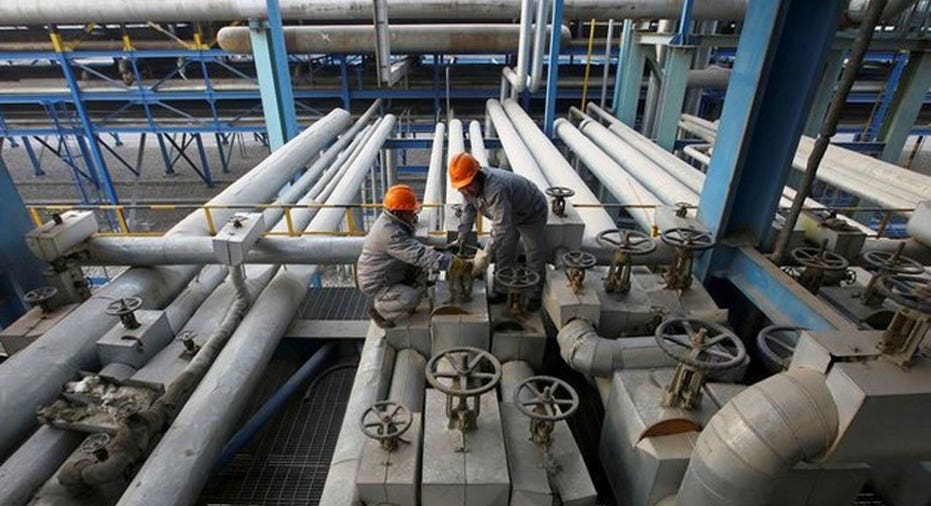Oil crawls up as UK pipeline still out, U.S. supply limits gains

Oil edged up towards $64 a barrel on Tuesday, helped by a North Sea pipeline outage, OPEC-led supply cuts and expectations that U.S. crude inventories had fallen for a fifth week.
But rising U.S. output has put a lid on gains. Shale production will rise to a record in January, according to a government forecast published on Monday, as higher prices encourage increased drilling.
Brent crude LCOc1, the global benchmark, was up 13 cents or 0.2 percent to $63.54 a barrel at 11:45 a.m. (1645 GMT) U.S. crude CLc1 gained 25 cents or 0.4 percent to $57.41.
The shutdown of the North Sea’s Forties pipeline since last week has supported Brent, as Forties is the largest of the five crude grades underpinning the benchmark. On Dec. 12, Brent reached $65.83, its highest since mid-2015.
“You’ve had a little surge because the pipeline is still plaguing the North Sea,” said Rob Haworth, senior investment strategist at U.S. Bank Wealth Management, “It’s enough to sway some market sentiment but a lot of it is already priced in.”
Ineos, the operator of the Forties pipeline, said on Tuesday it was moving forward with a preferred repair option and the timeframe for the fix remained two to four weeks starting from Dec. 11, the date of the shutdown.
Oil ticked up after reports that a missile was fired at the Saudi Arabian capital Riyadh from Yemen, but Saudi Arabia said it intercepted the missile and no casualties were reported.
Prices have also drawn support from a deal by the Organization of the Petroleum Exporting Countries and non-member producers including Russia to cut crude output to curb a global glut.
OPEC and its allies have extended the agreement until the end of 2018 and Russia’s Rosneft said on Monday it could be maintained beyond next year.
The cuts have trimmed global oil inventories, and the latest weekly supply reports are expected to show a further reduction.
U.S. crude oil inventories were forecast to have fallen for a fifth straight week along with a probable fall in distillate stocks last week, a preliminary Reuters poll showed on Monday.
The first of these reports, from the American Petroleum Institute, is due at 4:30 p.m. EST on Tuesday. [EIA/S]
Still, rising U.S. production is countering lower supply elsewhere. U.S. shale output in January is forecast to increase by 94,000 barrels per day to 6.41 million bpd, according to the EIA’s monthly drilling productivity report published Monday.